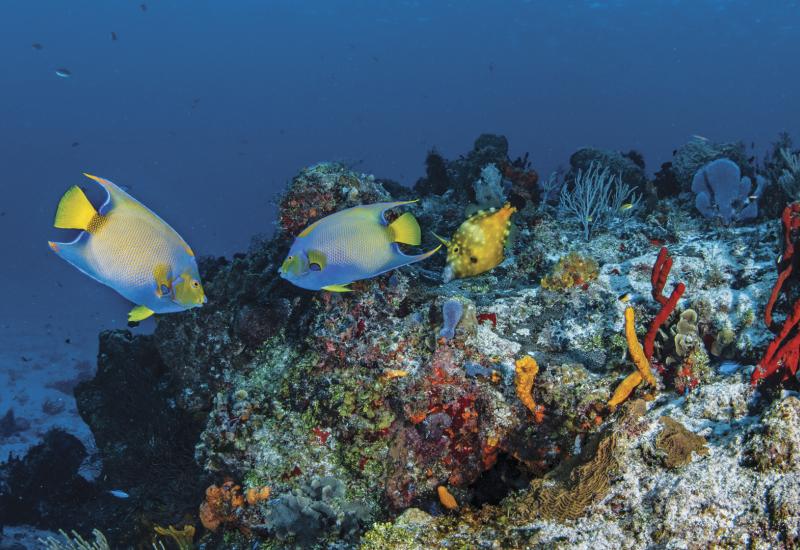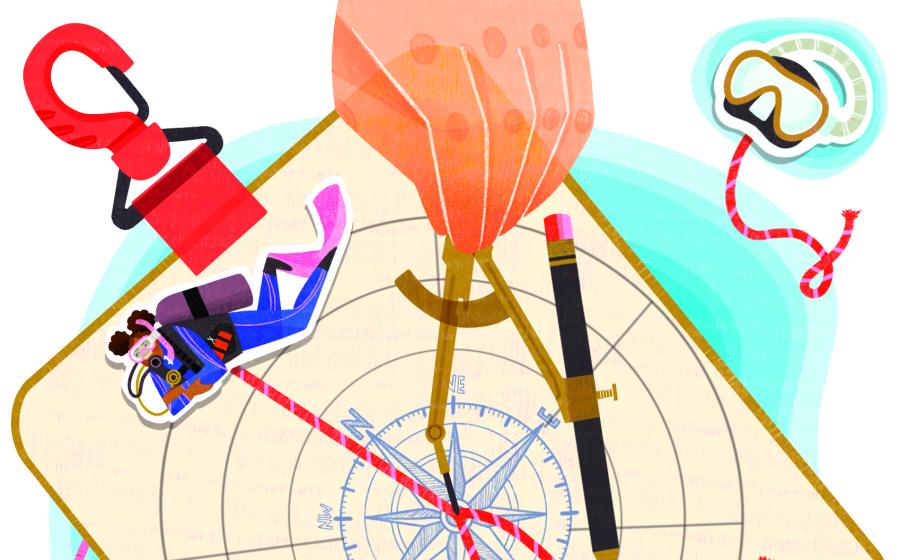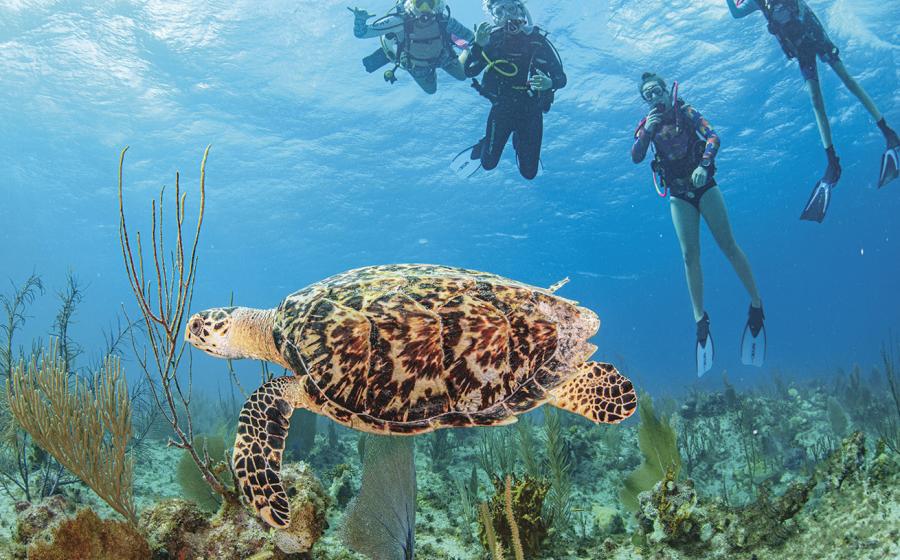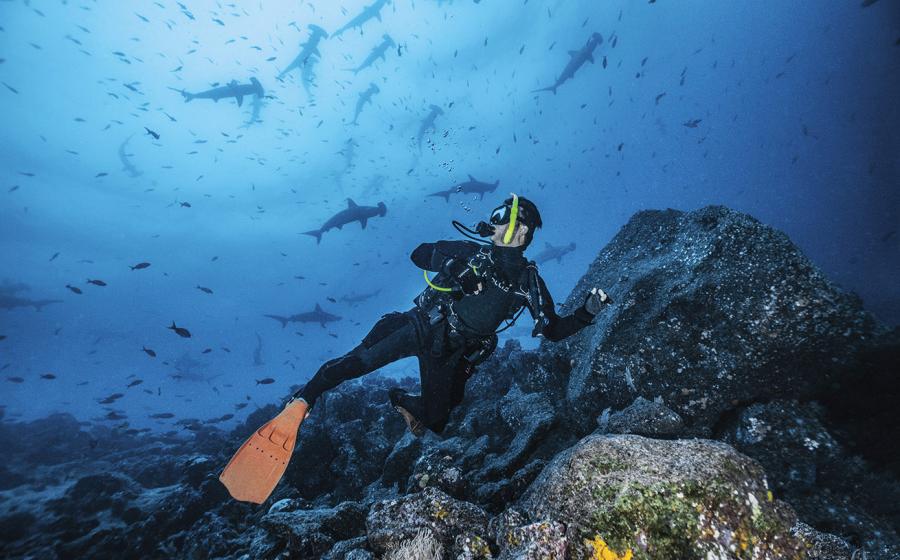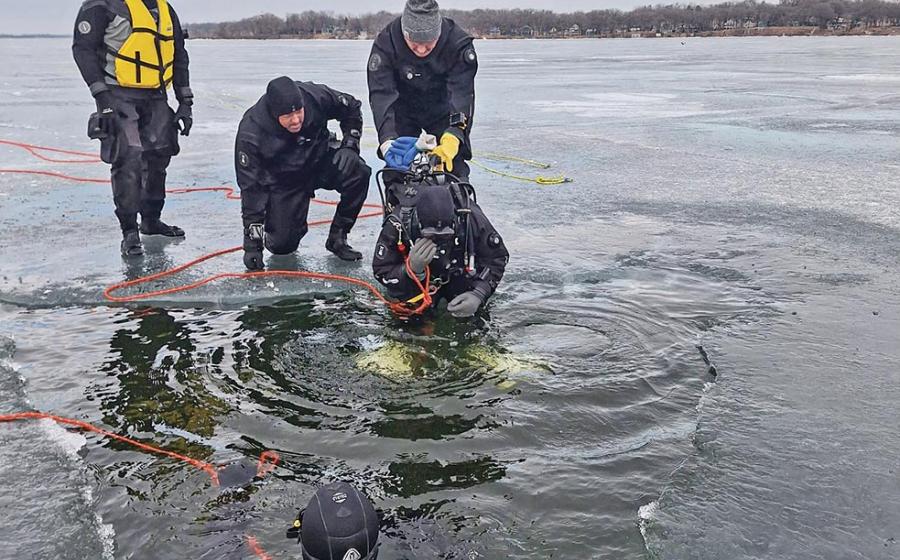Postcards from the Edge: Cozumel — The Big Picture
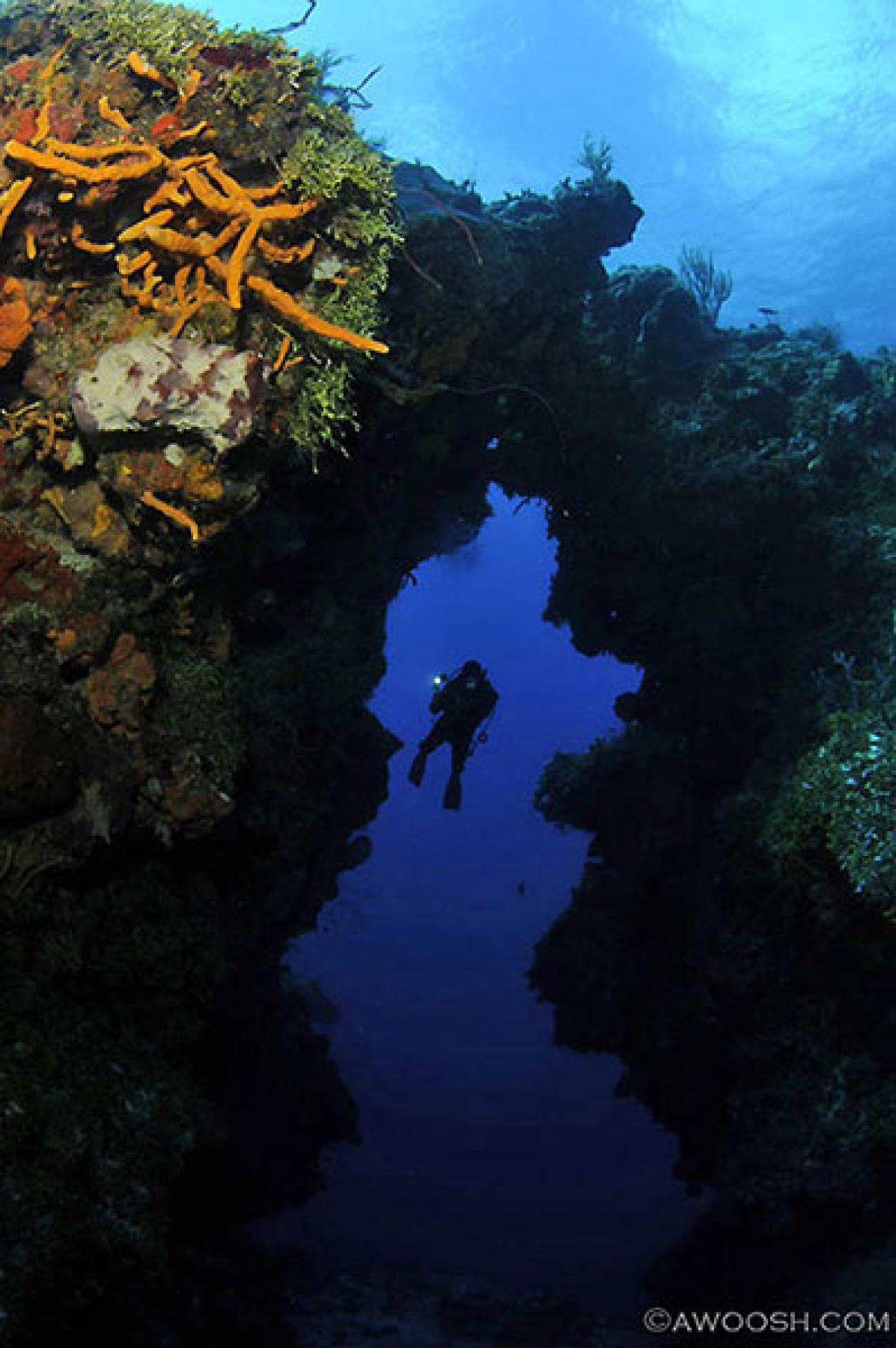
Judy GThe extensive Palancar reef system, which is near the southern tip of the island of Cozumel, has numerous beautiful swim throughs and caverns, as well as this memorable coral arch.
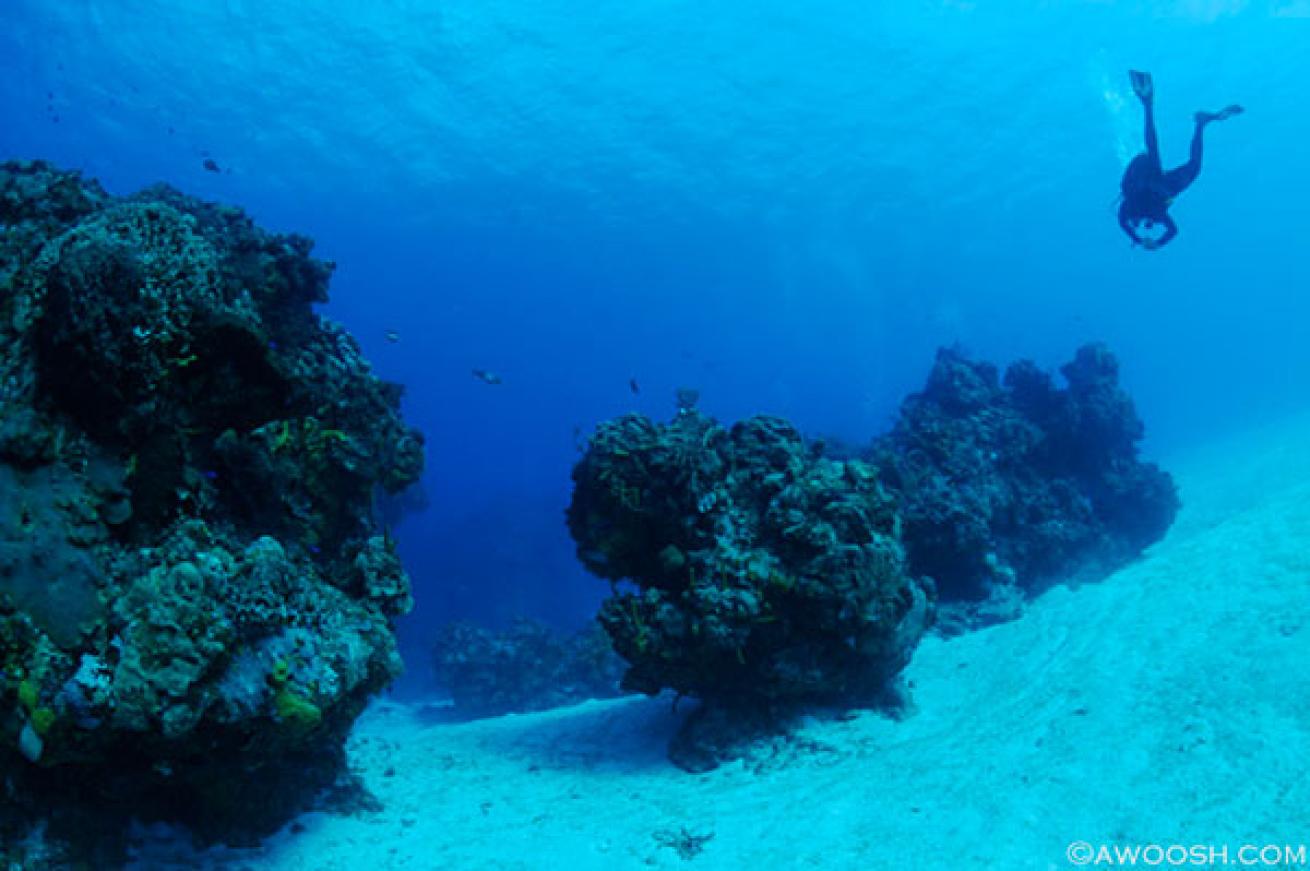
Judy GOne of the biggest attractions of Cozumel is the (sometimes) epic visibility. It is not at all uncommon to find 80 feet of visibility, and on a few occasions, I have had the thrill of diving in 120 feet of gin clear water. It is wonderful to be able to see all the island's dramatic reef structure arrayed out far ahead of you.
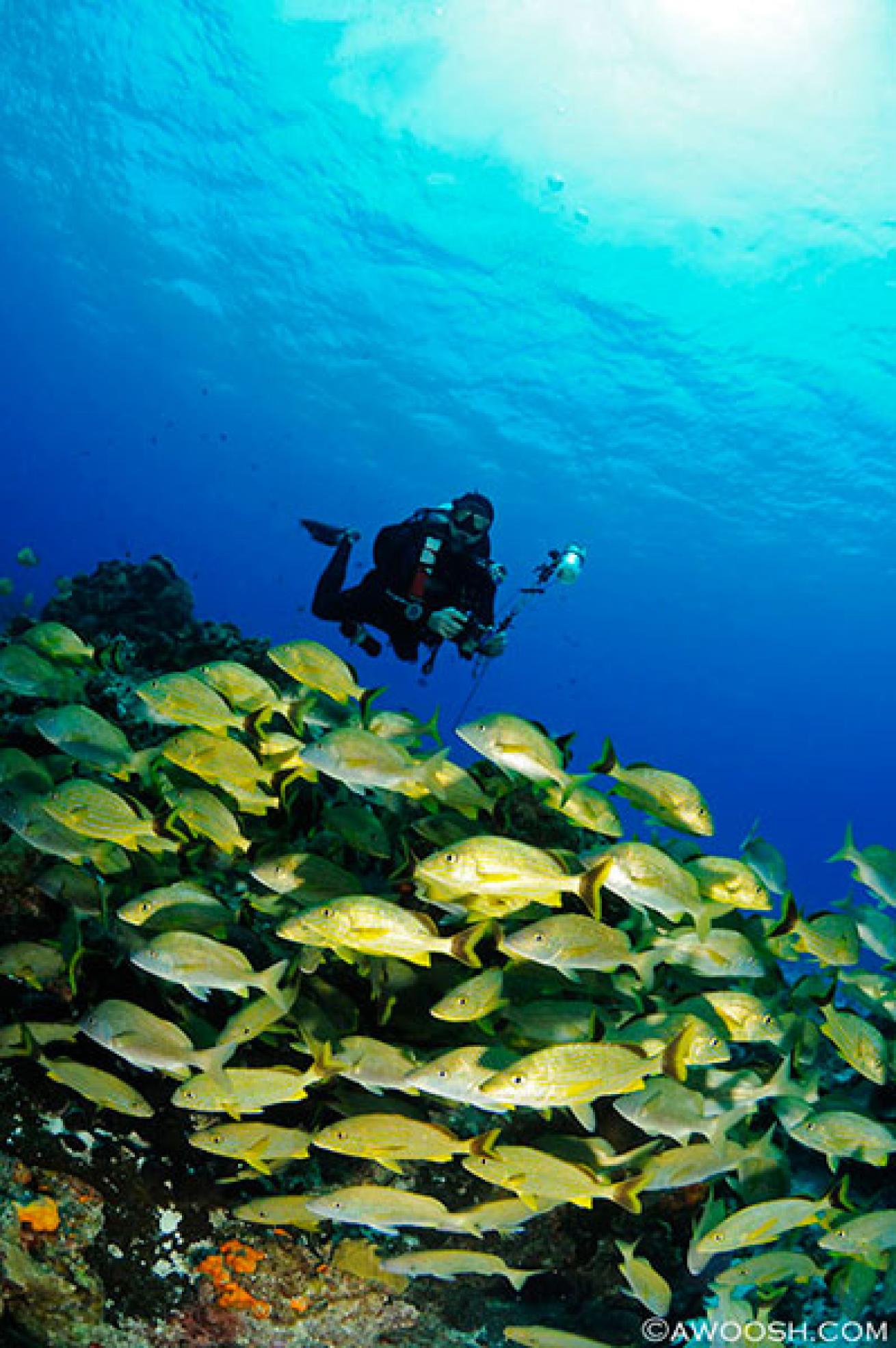
Judy GOkay, I am going to confess that although I have never met a dive I didn't like off of Cozumel, I do have a couple of favorites, and this site, Paso del Cedral, is one of them. Although it lacks the drama of a steep wall, it has an epic swim through that resembles a labyrinth, and it is always very fishy. I have also seen at least one shark on this site every time I've dove it.

Judy GMore dramatic terrain in the Palancar reef section.
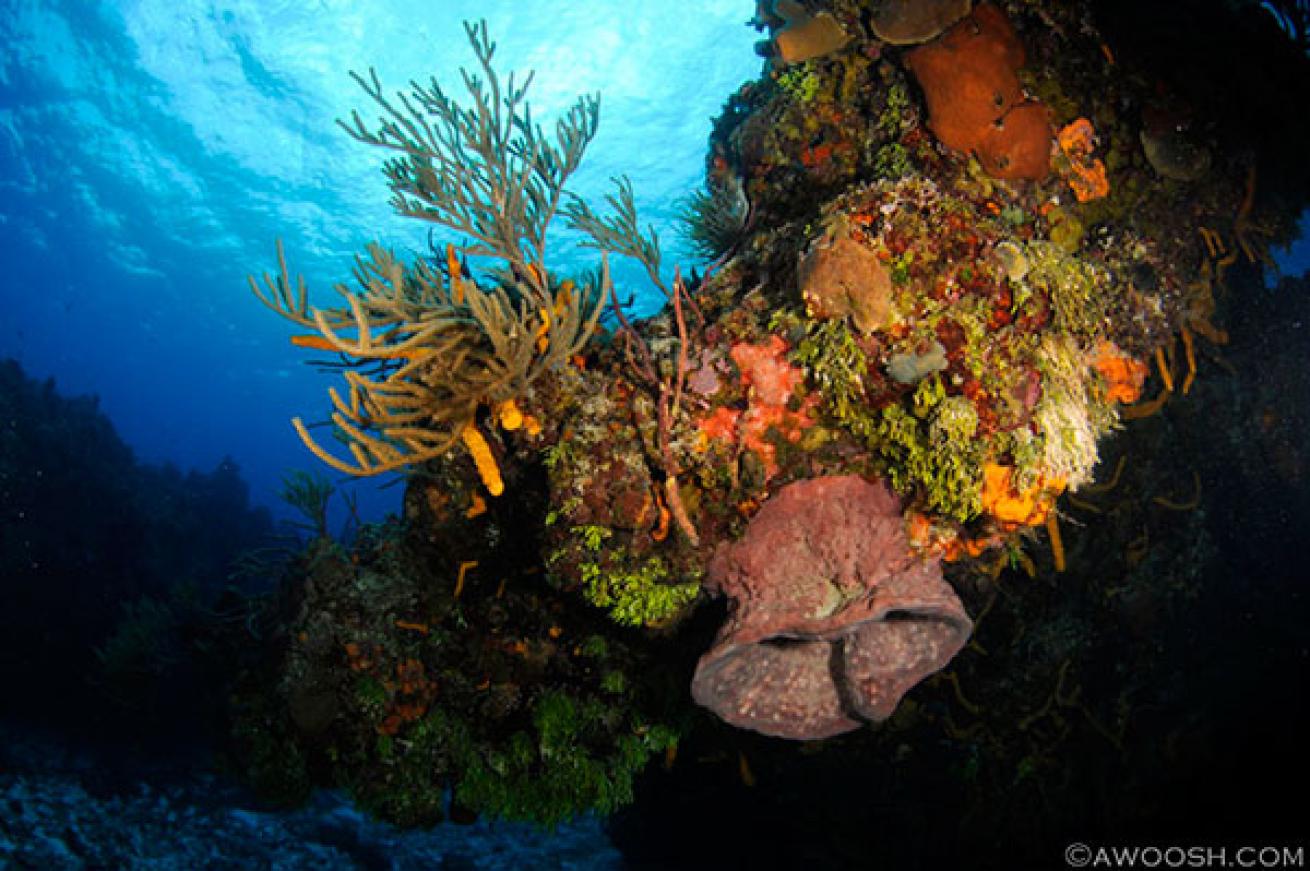
Judy GHealthy coral gardens a-blooming -- this shot was taken at about 80 feet.

Judy GIt is not usually terrifically fishy at Palancar (really, it is all about the gorgeous terrain on the Palancar sites), but here we came upon a spot with some serious fish action, reminiscent of the pulsing anthias that can be seen in the tropical Pacific.
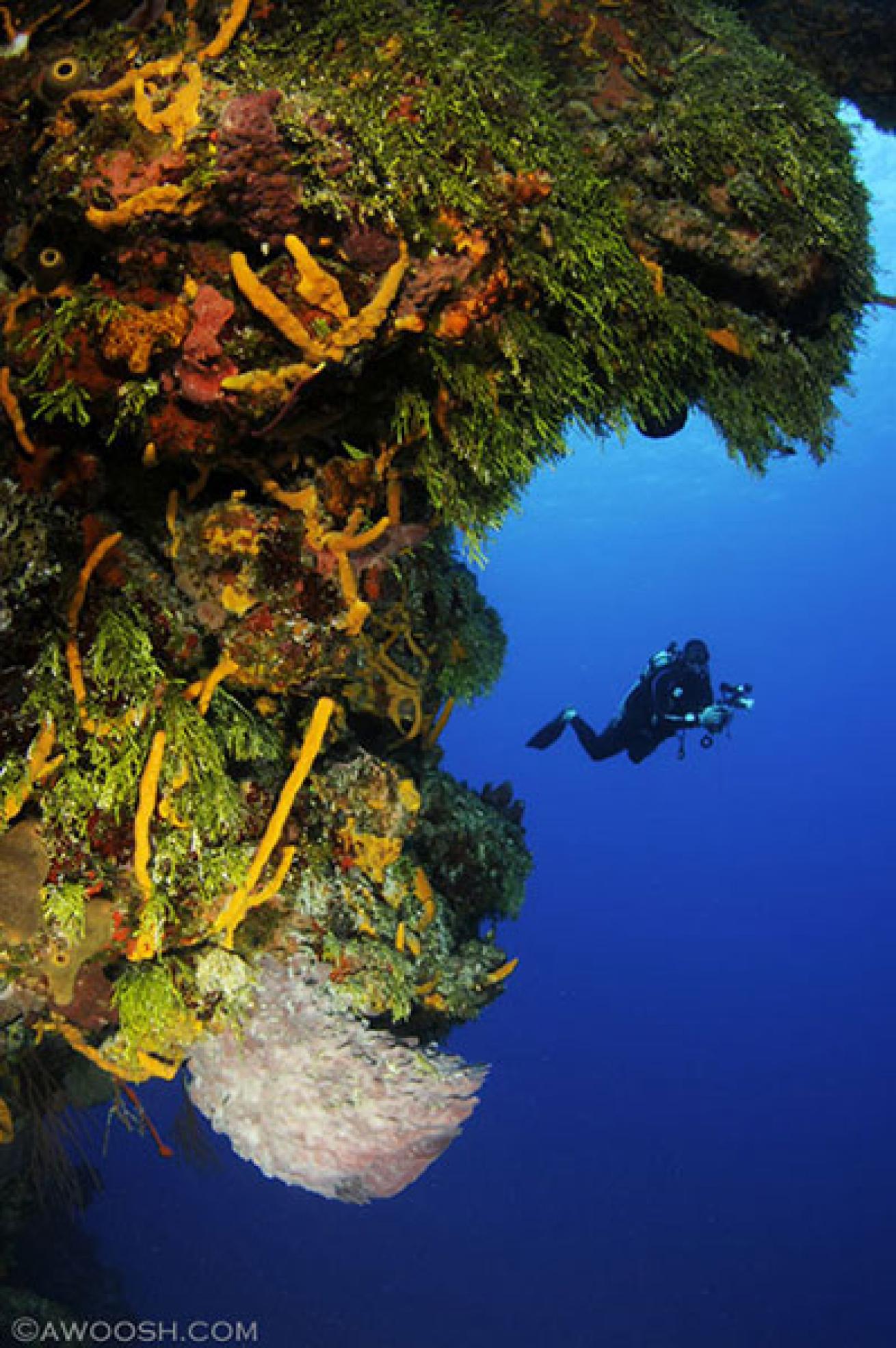
Judy GSo you've probably guessed it by now -- Palancar Reef, all four parts of it, is another of my Cozumel favorites. I have dived its various sections many, many times, and I never tire of them. Colorful, lots of swim throughs, usually some turtles and sharks to be seen -- it's all pretty wonderful.
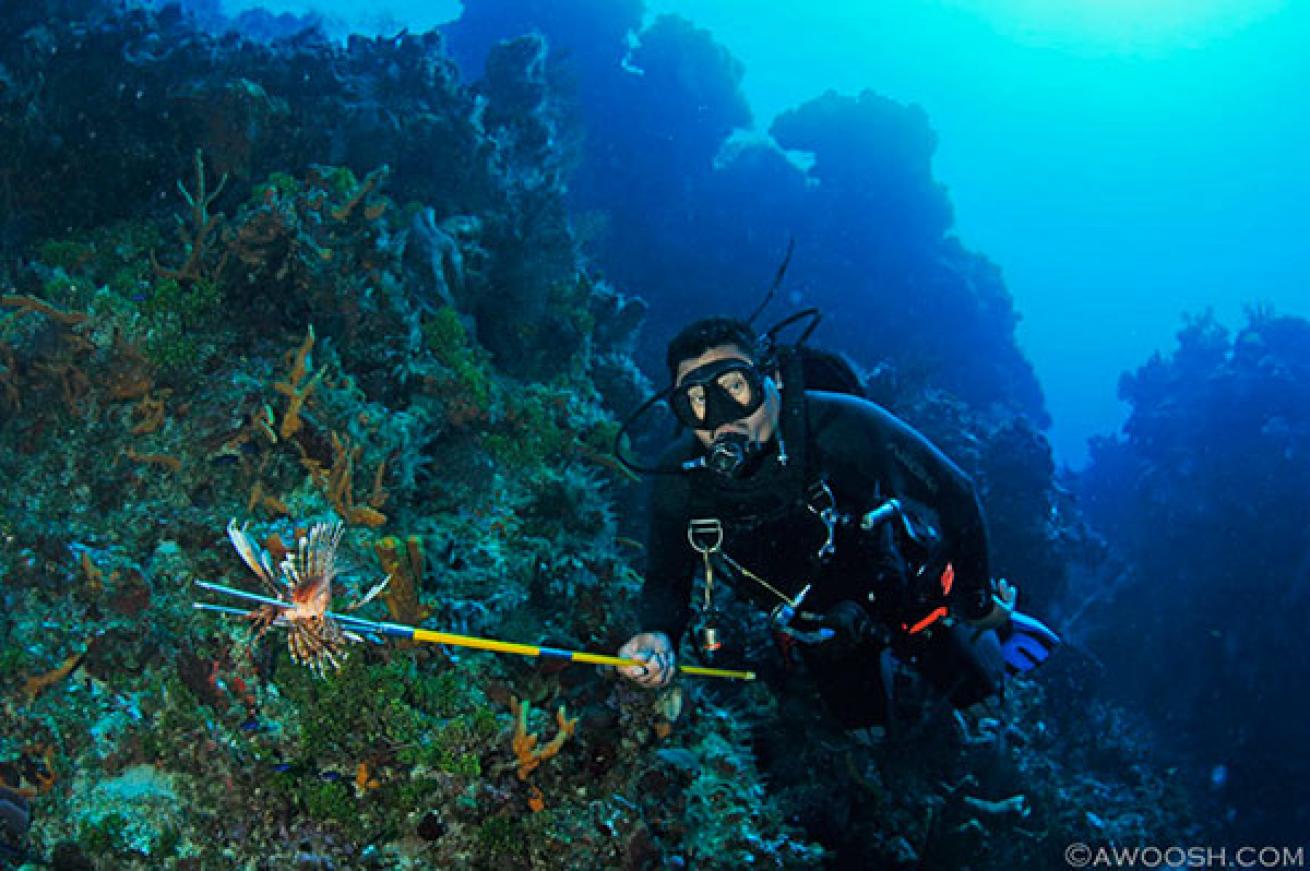
Judy GLike much of the Caribbean, Cozumel has been invaded by lionfish over the past few years. The local dive professionals (this is Pedro of Blue XT Sea Divers) are doing what they can to keep the population under control by (legally) killing the fish, as these voracious lionfish have no natural predators in the Caribbean, and they are quick to reproduce. In just a few short years, there has been a serious population explosion, and you will see beautiful, but ecologically upsetting lionfish, pretty much on every dive. It has been discovered that they make good eating, and a new economy is emerging around the culling of lionfish and the sale of them to restaurants and fish markets.
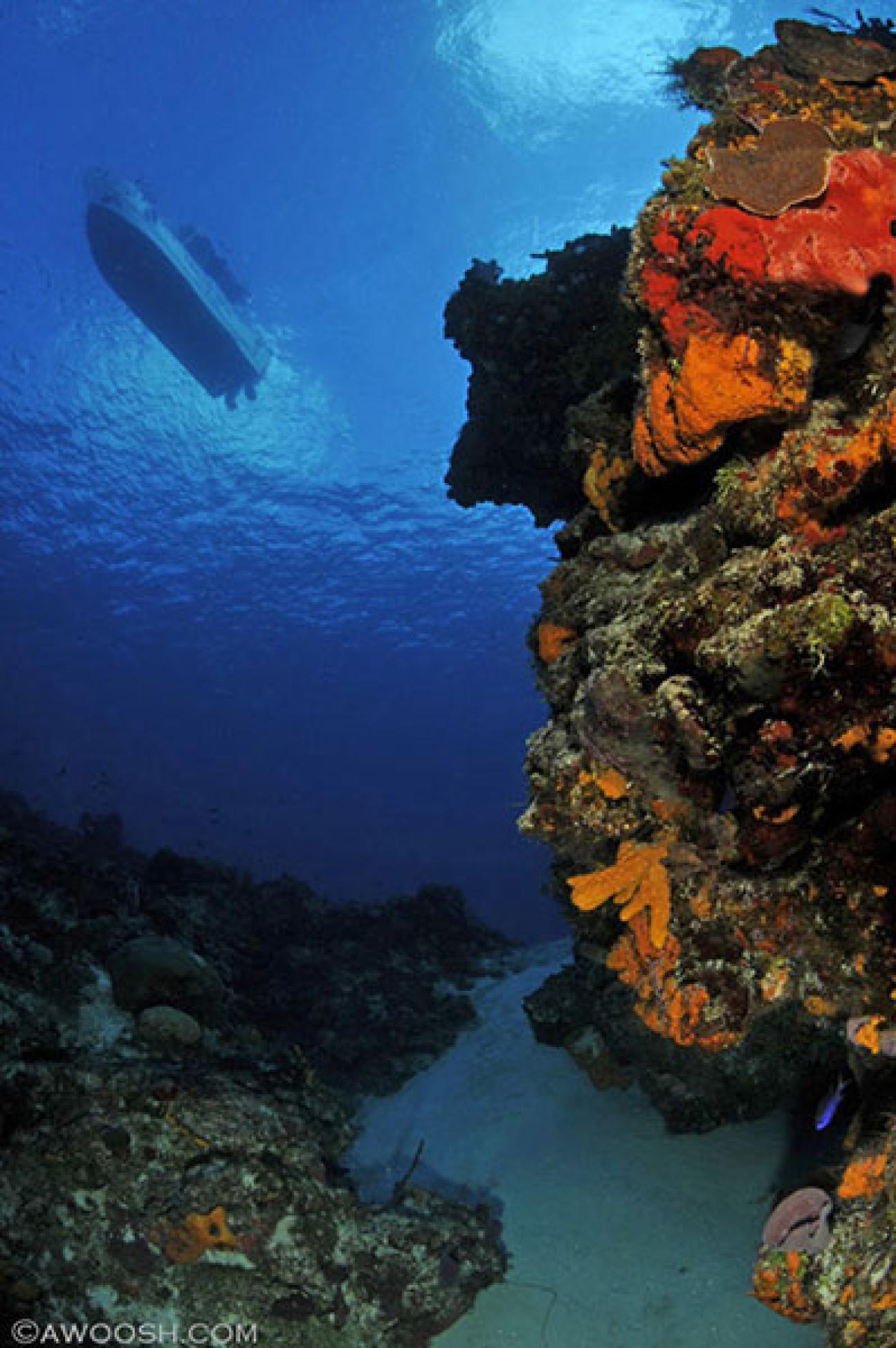
Judy GSanta Rosa -- she's a beauty. This site features a very steep wall -- in some places very vertical -- and gorgeous coral formations encrusting the top edge where the wall meets the sand flats. The corals and sponges, when lit up by strobe or flashlight, really are these amazing colors.
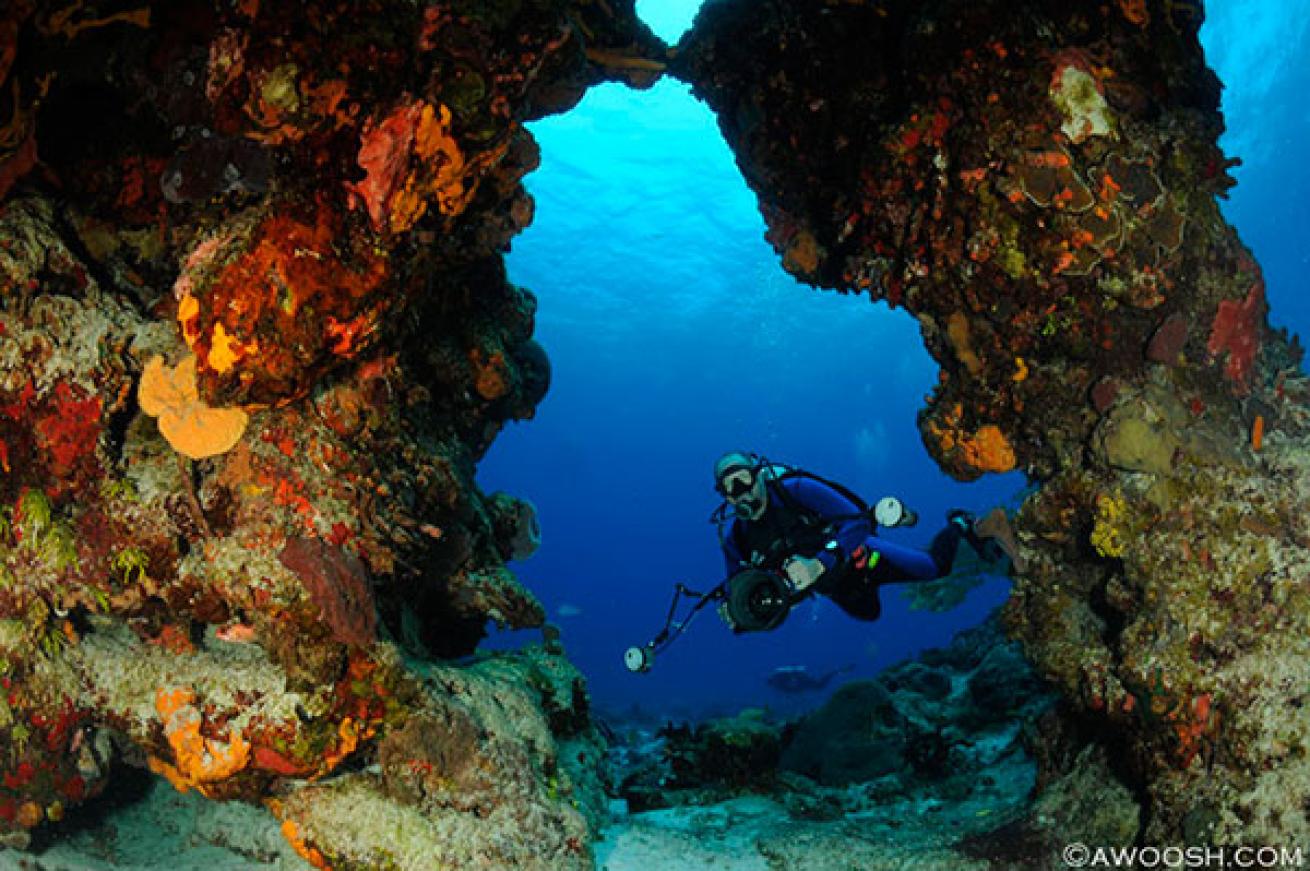
Judy GMy buddy Rev (also a keen photographer) swimming through a gorgeous arch at Cedral.
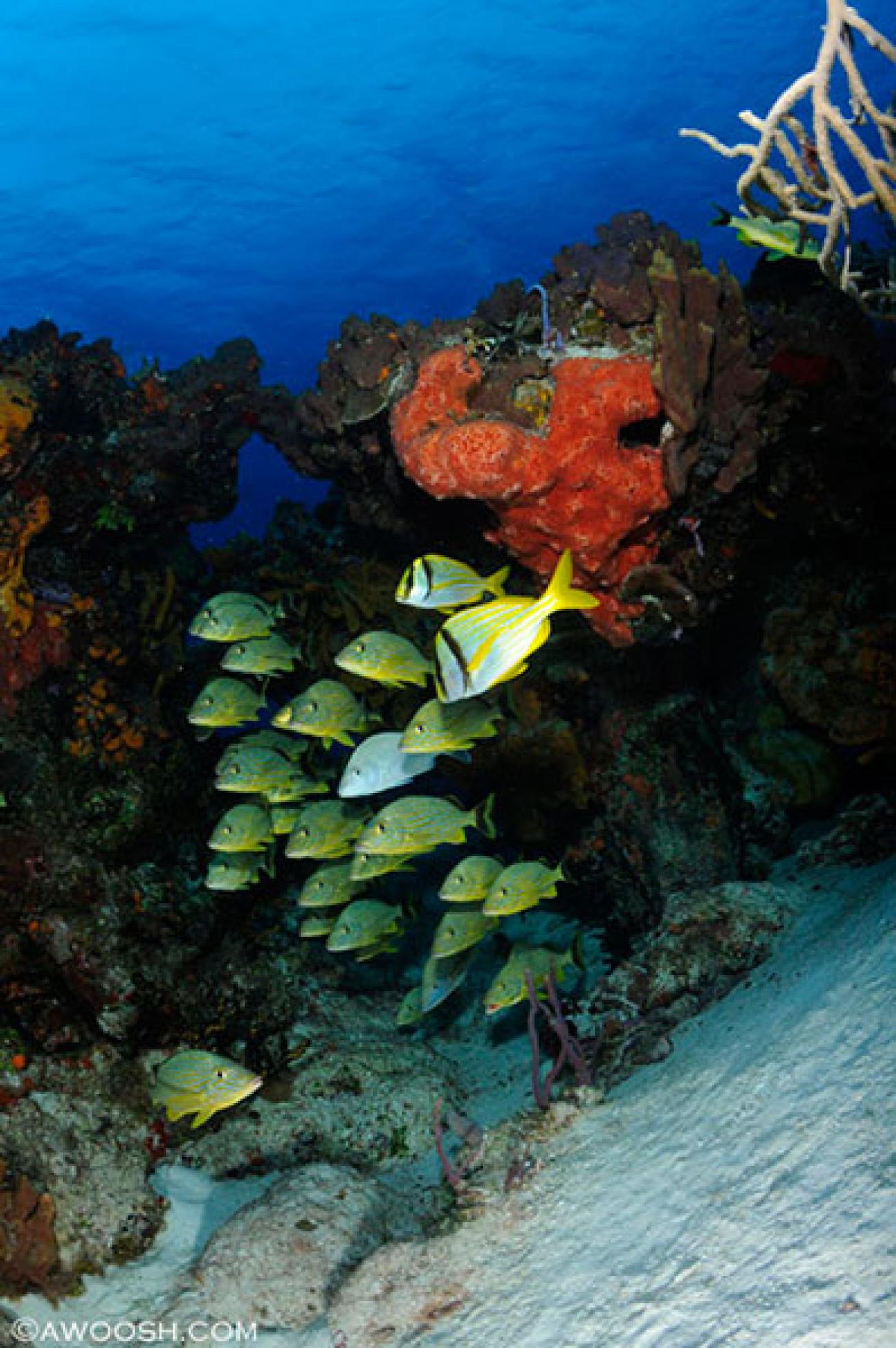
Judy GI mentioned before that Paso del Cedral is a very fishy site -- there always seem to be several aggregations of grunts like these, as well as schooling porkfish. Also commonly found on this site are jawfish, eels, big grouper, and nurse sharks.
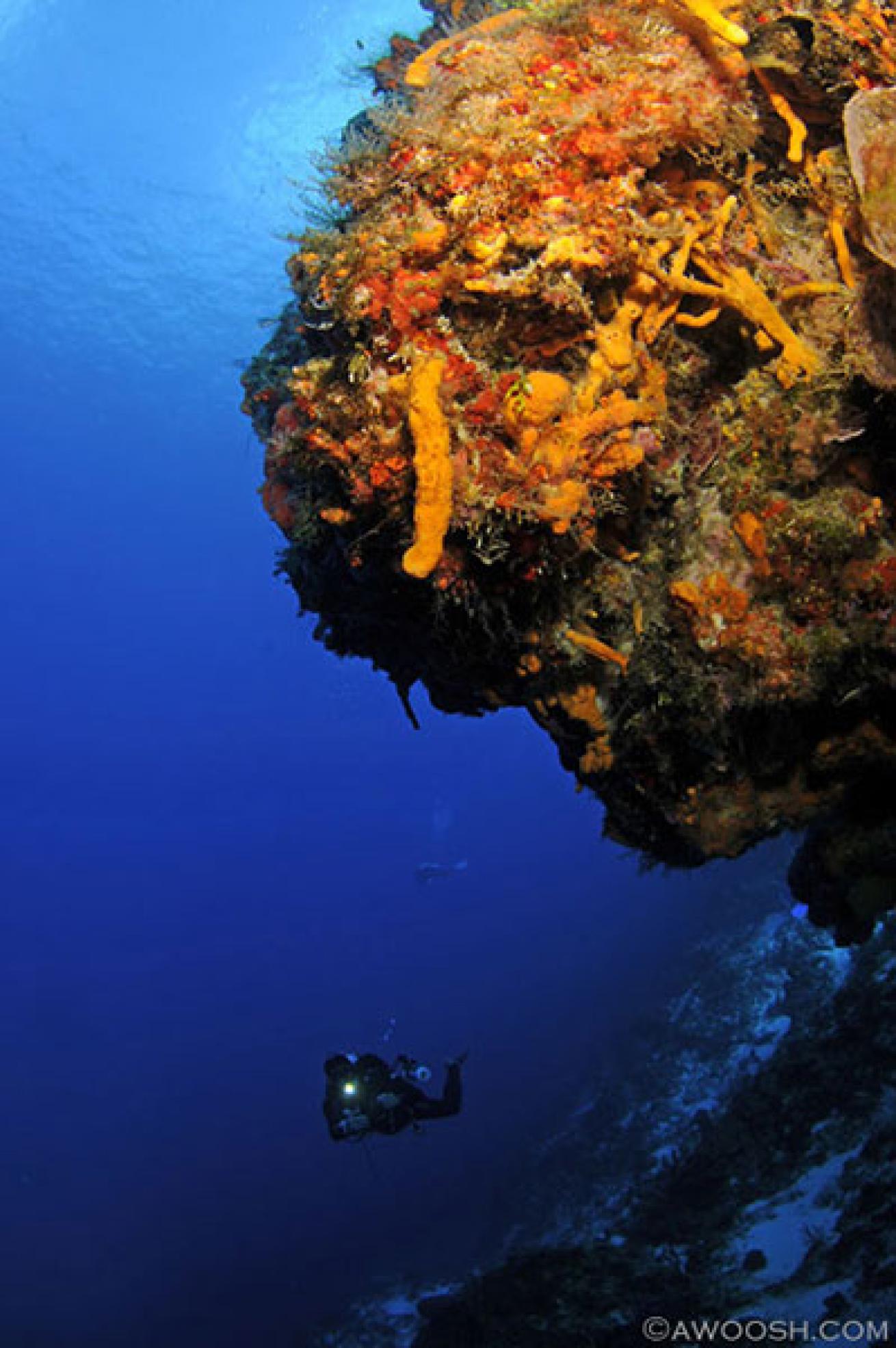
Judy GMore dramatic terrain at Santa Rosa Wall.
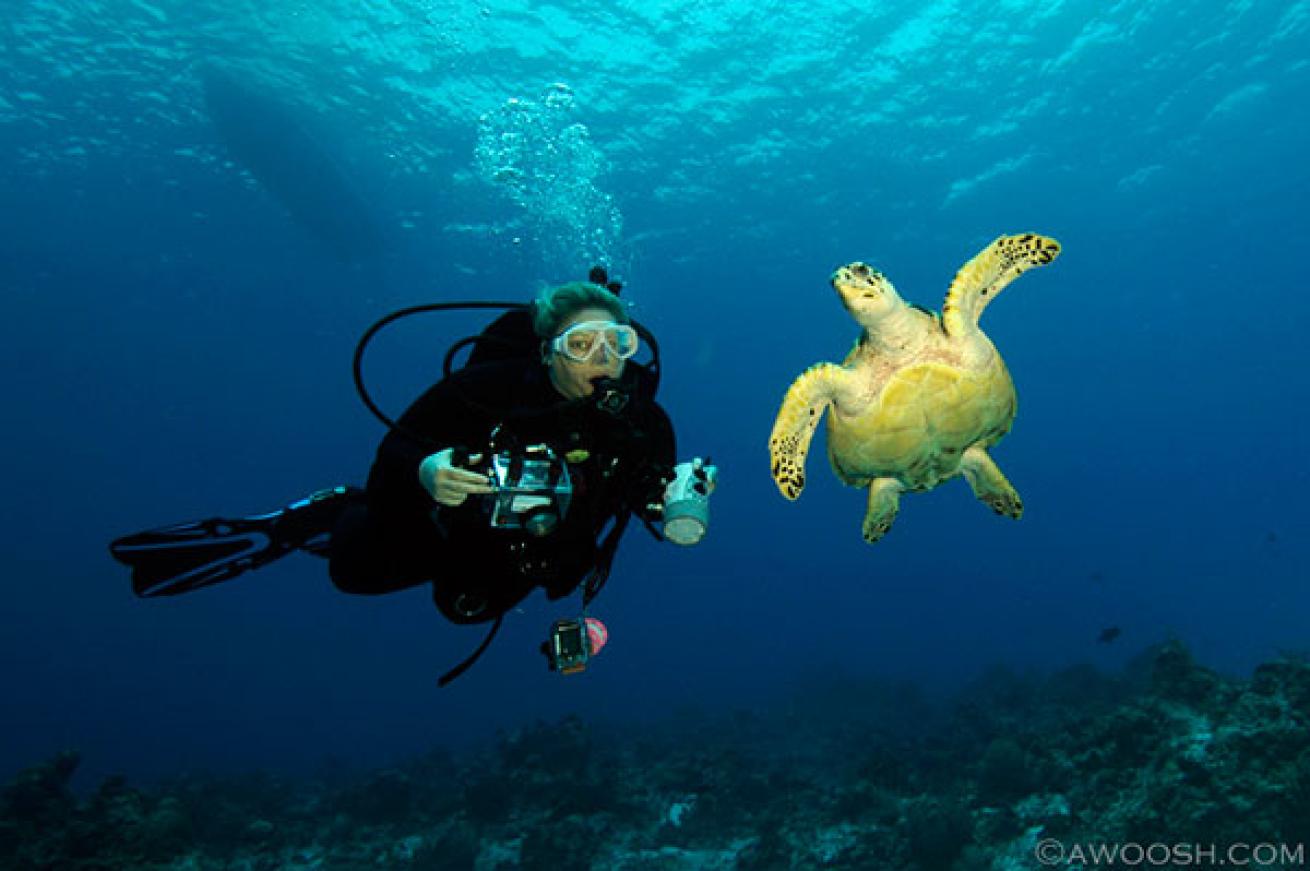
Judy GThis image is of Christi, owner of Blue XT Sea Diving, and a friendly turtle. There are a lot of turtles in the protected marine park at Cozumel, and they seem quite habituated to divers, so getting a close approach like this is not impossible.
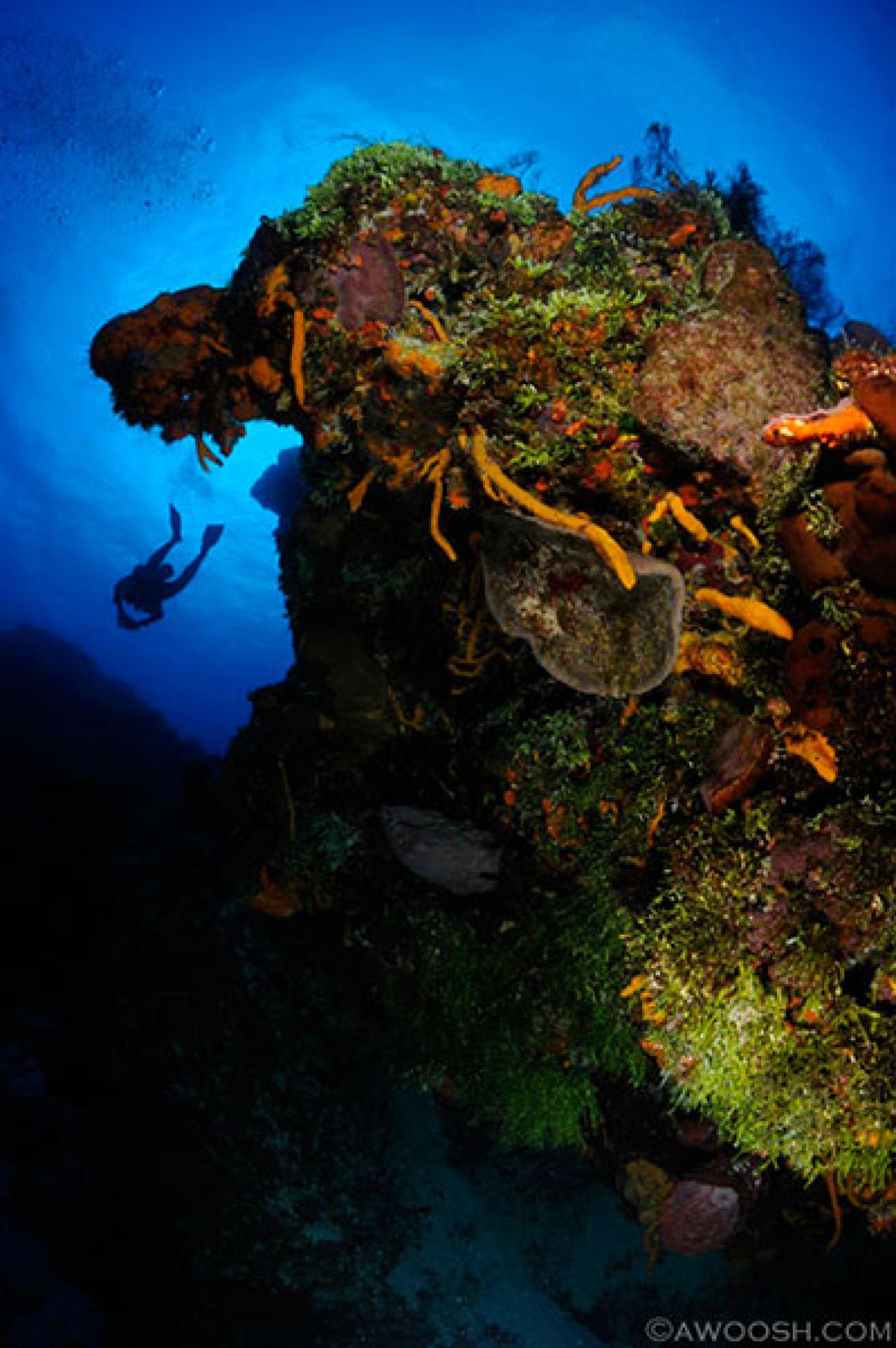
Judy GYet more dramatic terrain at Santa Rosa. The diver in the image gives a sense of the massive size of these gorgeous coral formations.
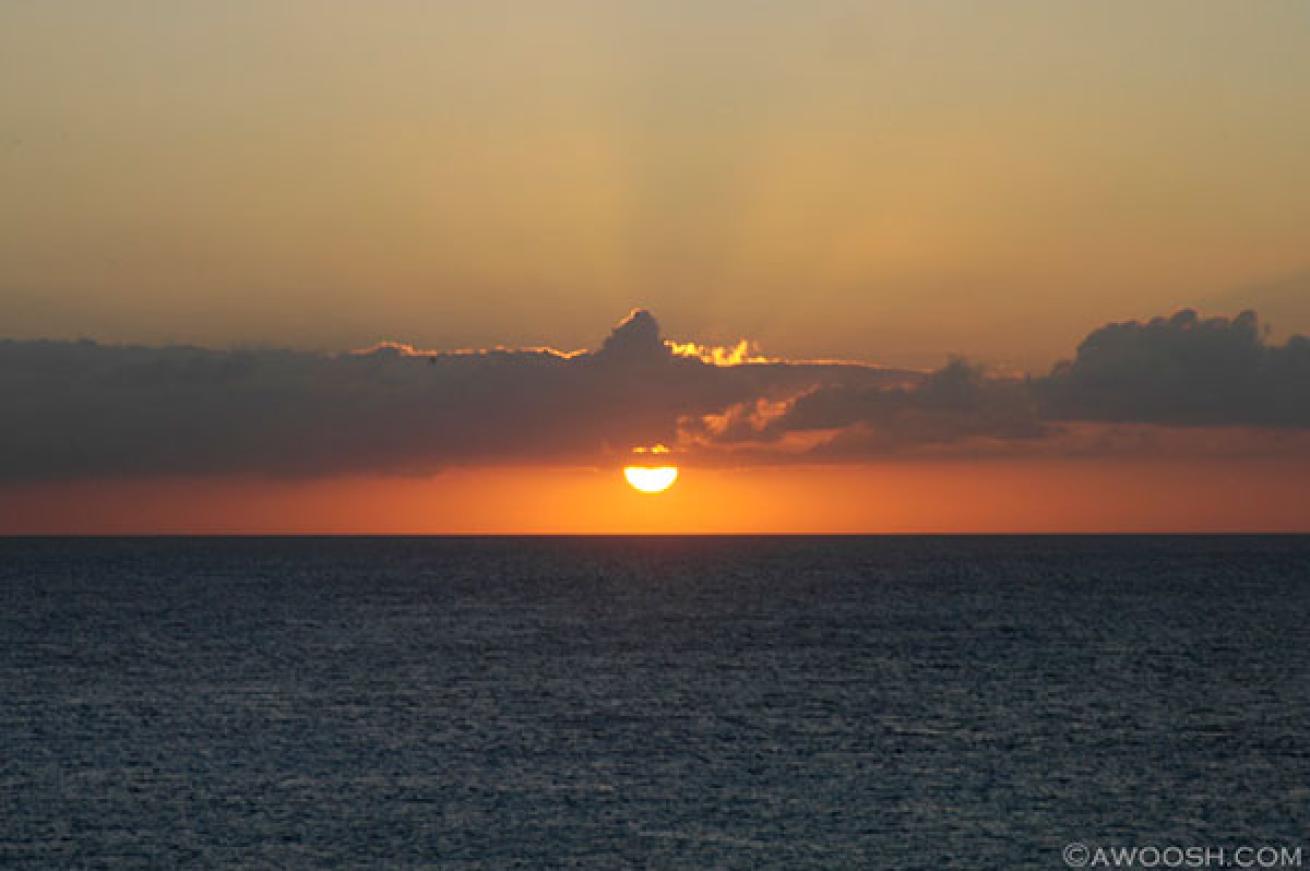
Judy GThe parting shot -- a beautiful sunset from the town of San Miguel on Cozumel.
Cozumel continues to be one of the most popular dive destinations in North America, and for good reason. La isla (as it is known by the locals) is relatively easy to get to from several gateways in the US and Canada, and it is also a short commute by bus and ferry from Cancun. It has abundant tourist infrastructure – everything from posh all-inclusive resorts to budget-friendly backpacker accommodations, and the main town of San Miguel is chockablock full of great restaurants and bars.
As for the diving? Well, it’s pretty epic.
There is a flotilla of dive operators to choose from on Cozumel, catering to all levels and tastes of divers, from newbies to tech divers. There are many great dive sites with varied, abundant and healthy marine life (thanks to a large, dedicated marine park). There is jaw droppingly beautiful underwater terrain – including steep walls, caverns, and innumerable swim-throughs. And there is legendary great visibility.
Did I mention the beautiful and diverse terrain? Cozumel is the home to a couple of dozen wonderful dive sites, with some of the most popular being the Palancar system (Caves, Gardens, Horseshoe, and Bricks), Colombia, Paso del Cedral, Punta Tunich, Yucab, La Francesa, Chankanaab, Dalila, Tormentos. Maracaibo, Santa Rosa, Punta Sur, and, to the north, the big (current) rippers at San Juan and Barracuda. Wreck divers can dive the 154-foot sunken minesweeper C-53, and tech divers can find their depth on a number of sites. There is even freshwater technical cave diving in cenotes on the island. Cozumel truly has something for everyone.
A few of the sites are very steep and deep (as an example, popular Santa Rosa Wall plummets quite vertically to the depths on some portions), and there are often currents running in Cozumel, from mild to ripping, depending on site and time of year. Occasionally down drafts are reported off some of the walls – always a disconcerting experience. So divers need to be honest about their dive experience with the operator they go with, so that appropriate sites for their level and ability can be chosen.
All diving is done via live boat – that is the boat follows the bubbles of their divers and picks them up wherever they surface. All divers in Cozumel (with the exception of shore diving) are required by law to dive with a divemaster. There is enough boat traffic from the many dive operators that surfacing must be done with care to avoid collisions. A surface marker buoy that can be launched from one’s safety stop is an excellent idea – to let your boat know where you are, and to avoid being run over while surfacing.
Cozumel was clobbered by two big hurricanes (Emily and Wilma) in 2005. Wilma was especially devastating as it stalled over the island for a day and inflicted extensive damage, both topside and underwater. Cozumel’s beautiful coral gardens took a major hit – some sites were almost unrecognizable to me after the storm, as it silted out previous swim-throughs and created new ones. Huge sponges and sea fans were ripped off the reef, and the corals, especially above 60 feet or so, were tragically battered and broken.
I have continued to visit Cozumel pretty much once a year post-Wilma, and it has been heartwarming to see how quickly the reefs have healed. The corals will take a while, being the slow-growing creatures that they are, but new growth is evident everywhere. Sponges have grown at an astonishing rate, and now colorfully encrust much of the reef structures. The fish, turtle, shark and ray populations appear to be back to their previous, pre-hurricane levels.
All of the wide-angle reef scenes in this photo essay were taken post-Wilma, most from trips in 2010 and 2012. It’s plain to see that Cozumel has made huge strides in regaining its former splendor.
Born and raised on the west coast of Canada, Judy has always felt a strong connection to the ocean. As an avid underwater photographer and photo essayist, Judy has traveled extensively to pursue her passion. Her work has been featured in several dive publications and websites. To follow her photo and travel blog, visit her at:Awoosh.com.

